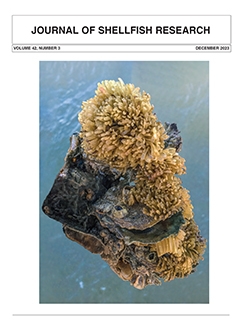Bryozoan epibiosis on lobster hosts has rarely been reported. This study documents bryozoan fouling of the American lobster (Homarus americanus Milne Edwards, 1837) from the Connecticut portion of Long Island Sound, USA. A total of 168,664 lobsters were examined for epibionts from 2000 to 2013 following the lobster fishery crash in 1999. The lobsters were caught commercially for the State of Connecticut, Department of Energy and Environmental Protection lobster catch monitoring program. The lobster shell condition in four stages of its molt cycle was noted (i.e., from a soft new shell, hard new shell, hard shell, to ready to molt). Of the lobsters caught, 29% were fouled by epibionts. Of those, 88% were fouled by bryozoans, 20% by barnacles, 6% by tube worms, 3% by slipper shells, and <1% by mussels and sea squirts. The prevalence of fouling increased as time since last molt increased from <1% of soft new shells to 1% of hard new shells, 31% of hard shells, and 45% of those ready to molt. This prevalence of bryozoan fouling reported here was higher than that in other studies and may have been due to the poor health of the host lobsters and/or poor water quality.
How to translate text using browser tools
31 December 2023
Bryozoan Fouling of the American Lobster (Homarus americanus) Following the 1999 Die-Off in Long Island Sound, USA
Marcus M. Key Jr.,
Kathryn R. Schorr
ACCESS THE FULL ARTICLE

Journal of Shellfish Research
Vol. 42 • No. 3
December 2023
Vol. 42 • No. 3
December 2023
atlantic
Bryozoa
epibiosis
Homarus americanus
lobster




